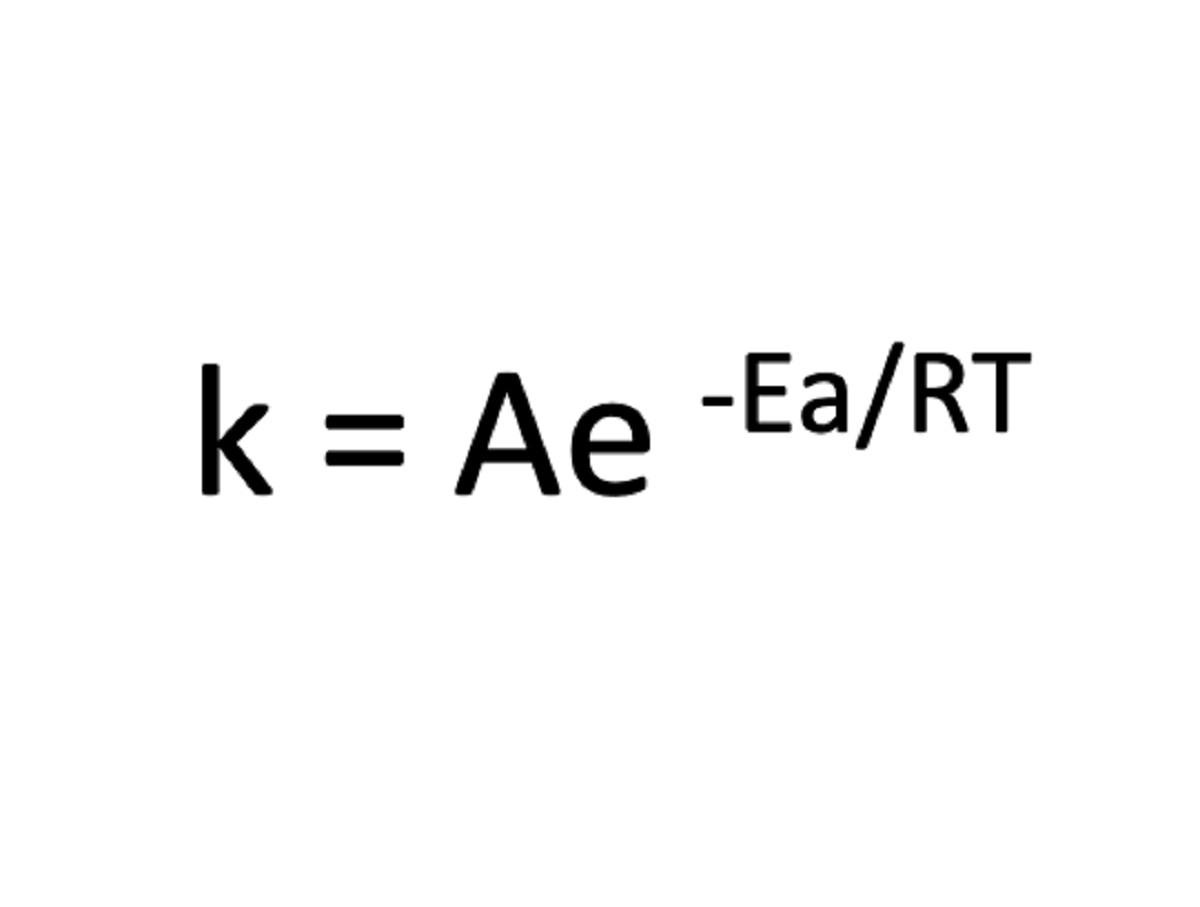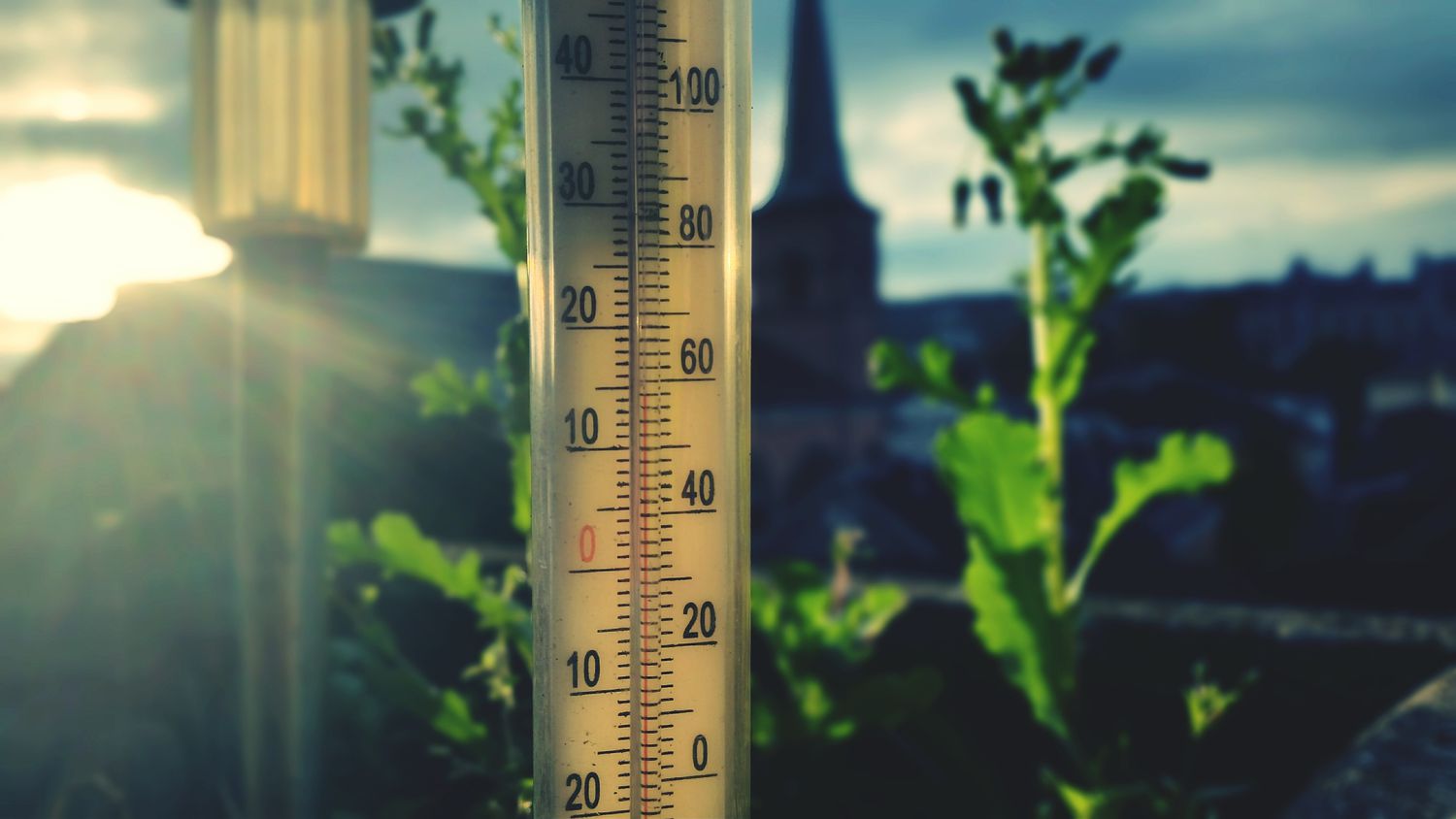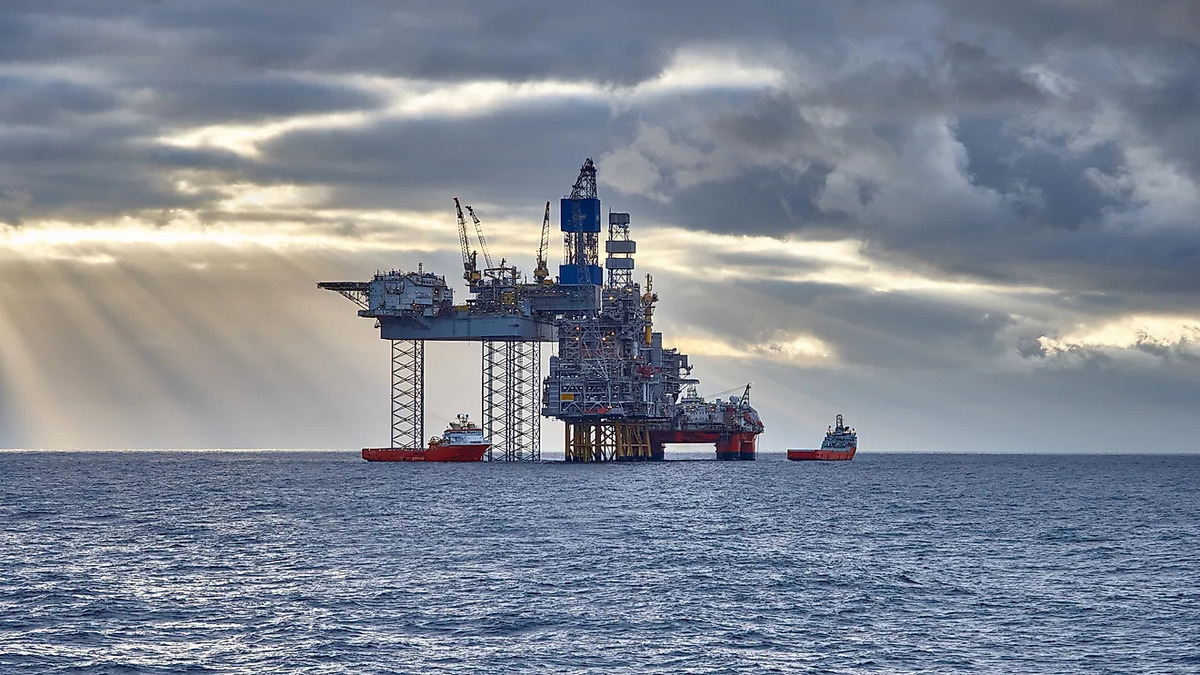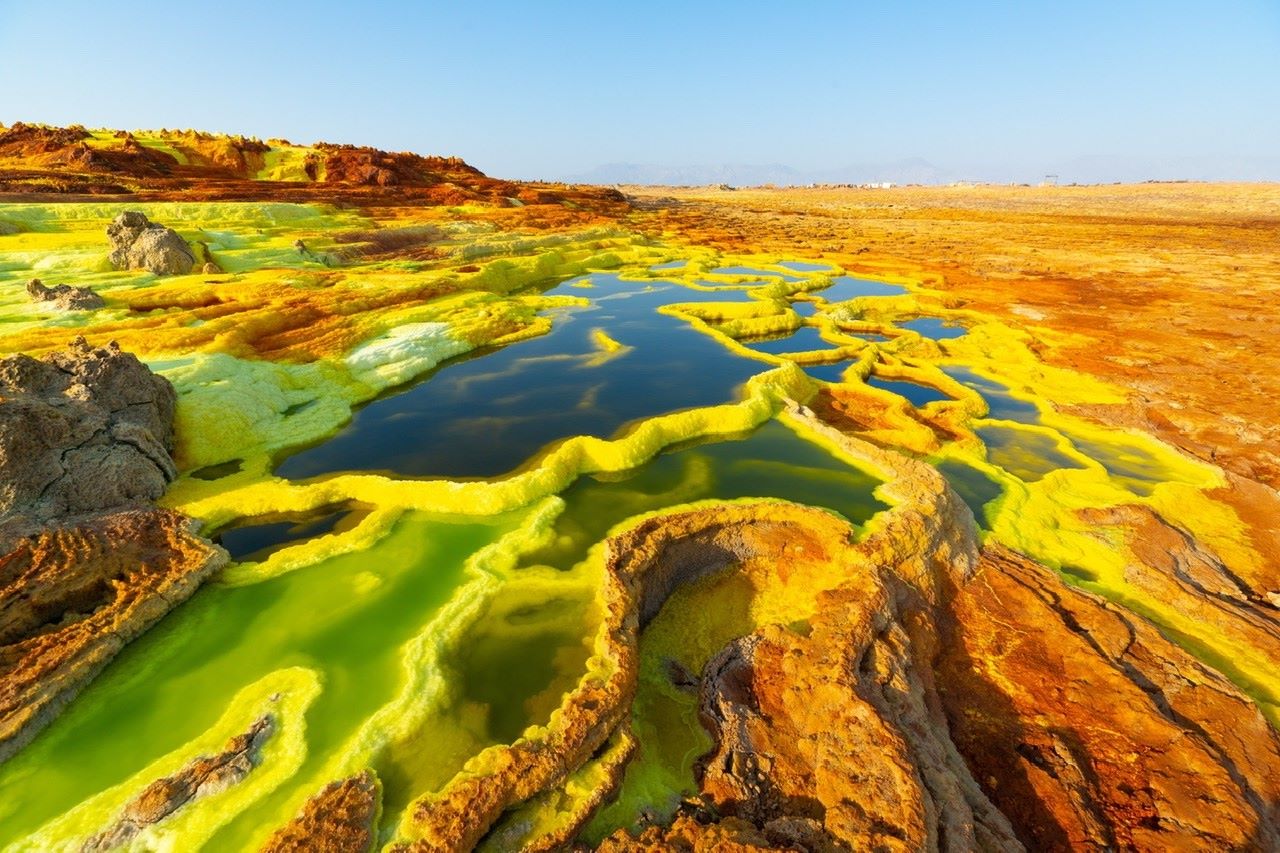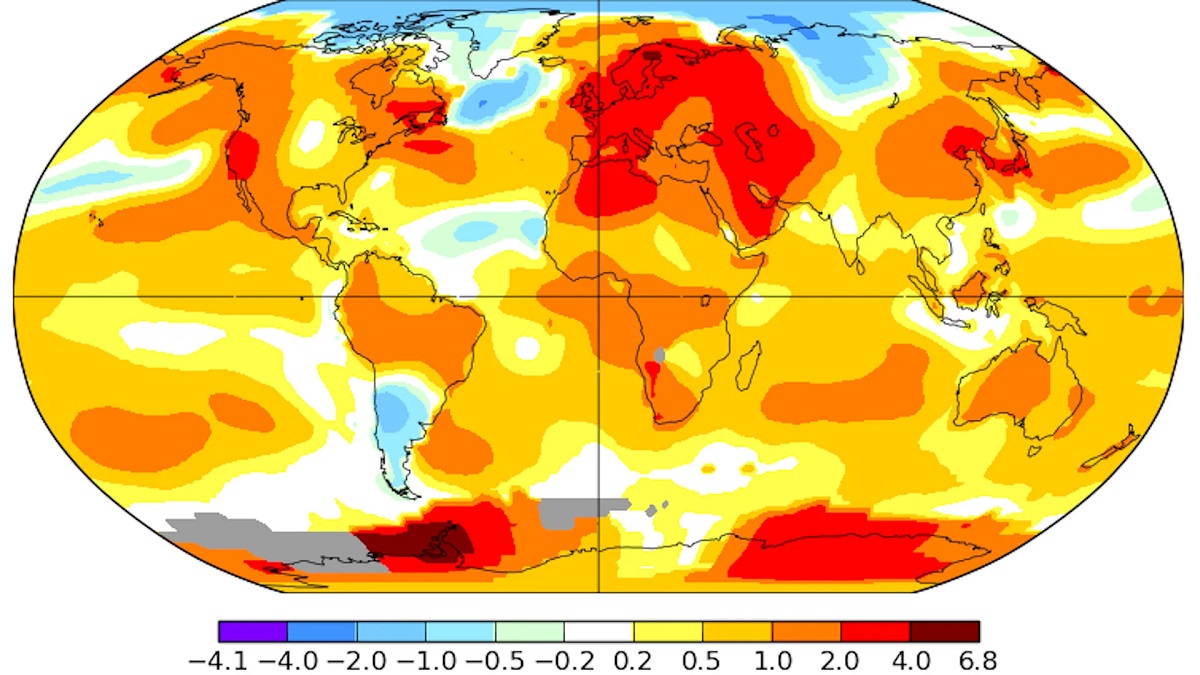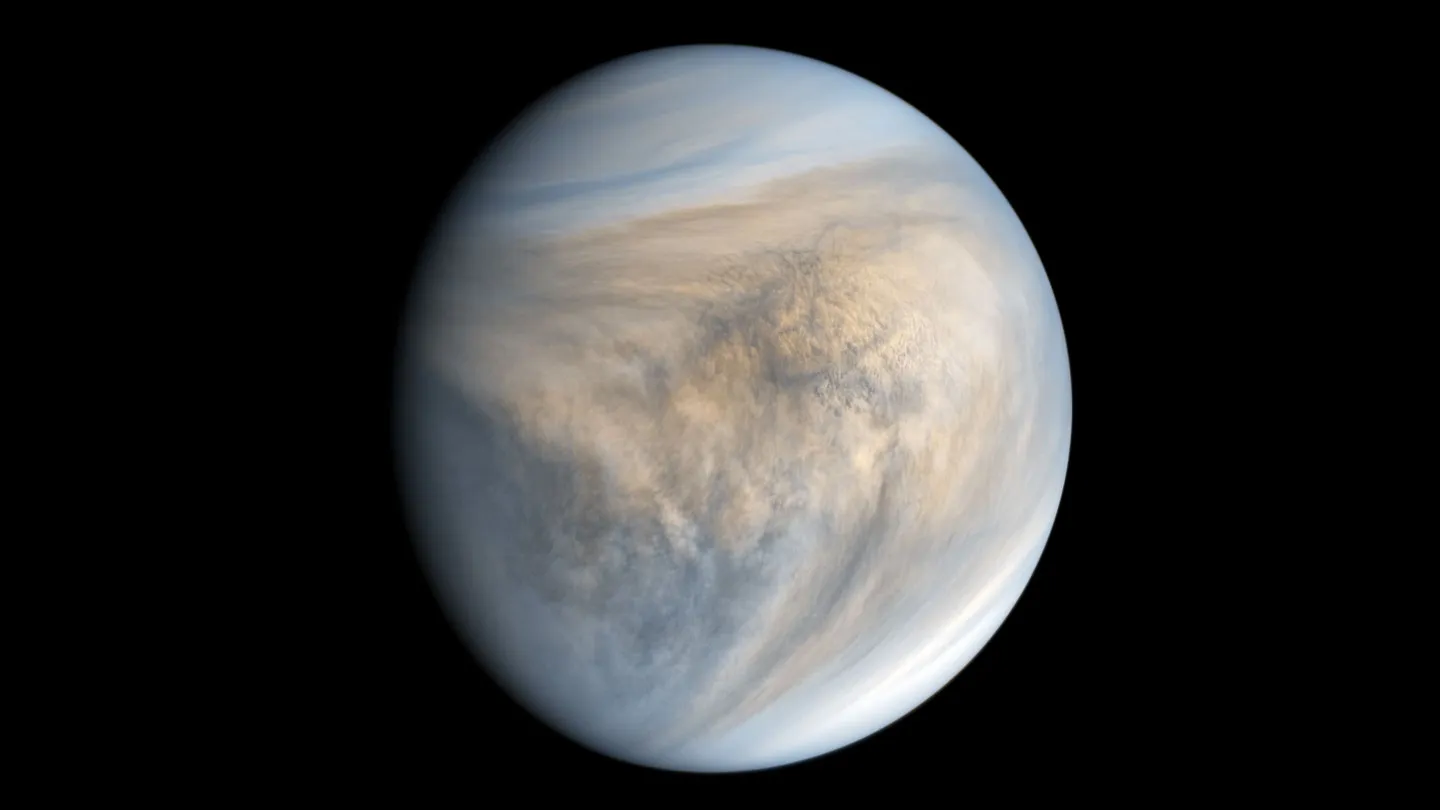Home>Weather and Climate>Why Are Temperatures At The Equator Warmer Than At The North Pole?


Weather and Climate
Why Are Temperatures At The Equator Warmer Than At The North Pole?
Published: March 6, 2024
Discover the reasons behind the temperature difference between the equator and the North Pole. Explore the impact of weather and climate on these contrasting regions.
(Many of the links in this article redirect to a specific reviewed product. Your purchase of these products through affiliate links helps to generate commission for Temperatures.com, at no extra cost. Learn more)
Table of Contents
- Factors Affecting Equatorial and Polar Temperatures
- The Role of Solar Radiation in Temperature Discrepancies
- Influence of Atmospheric Circulation on Equatorial and Polar Climates
- Impact of Ocean Currents on Equatorial and Polar Temperatures
- Human Activities and Their Effect on Equatorial and Polar Climates
Factors Affecting Equatorial and Polar Temperatures
The temperature disparities between the equator and the poles are influenced by a myriad of factors, each playing a crucial role in shaping the distinct climates of these regions. These factors include solar radiation, atmospheric circulation, ocean currents, and human activities.
At the equator, the angle of the sun's rays is more direct, resulting in a higher concentration of solar energy per unit area. This intense solar radiation leads to warmer temperatures in equatorial regions. In contrast, at the poles, the sun's rays strike the Earth at a lower angle, causing the same amount of solar energy to be spread over a larger area. Consequently, the polar regions experience lower temperatures due to the reduced solar energy input.
The distribution of solar energy is further influenced by atmospheric circulation patterns. Near the equator, the warm air rises, creating a low-pressure zone, while at the poles, the colder air descends, leading to a high-pressure system. This stark contrast in air pressure drives the movement of air masses, shaping the distinct climates of the equatorial and polar regions.
Moreover, ocean currents play a pivotal role in regulating temperatures. Equatorial regions are influenced by warm ocean currents, such as the Gulf Stream, which transport heat from the tropics toward the poles, thereby contributing to the relatively higher temperatures in these areas. Conversely, polar regions are impacted by cold ocean currents, such as the Labrador Current, which bring frigid waters from the polar regions toward the equator, contributing to the cooler temperatures experienced at the poles.
Furthermore, human activities have also begun to exert a discernible influence on equatorial and polar climates. The combustion of fossil fuels and deforestation have led to an increase in greenhouse gas emissions, resulting in the intensification of the greenhouse effect. This phenomenon has contributed to global warming, leading to amplified temperature changes in both equatorial and polar regions.
In essence, the interplay of solar radiation, atmospheric circulation, ocean currents, and human activities collectively shapes the contrasting temperatures experienced at the equator and the poles. Understanding these factors is crucial for comprehending the intricate dynamics of Earth's climate system and the potential implications of ongoing environmental changes.
Read more: Why Are the Poles Colder Than the Equator?
The Role of Solar Radiation in Temperature Discrepancies
The distribution of solar radiation plays a pivotal role in driving the temperature disparities between the equator and the poles. At the equator, the angle of the sun's rays is nearly perpendicular to the Earth's surface, resulting in a more concentrated and direct influx of solar energy. This leads to a higher intensity of solar radiation per unit area, thereby contributing to the warmer temperatures experienced in equatorial regions.
In contrast, at the poles, the sun's rays strike the Earth at a lower angle, causing the same amount of solar energy to be spread over a larger surface area. As a result, the polar regions receive less solar energy per unit area, leading to lower temperatures. This discrepancy in solar radiation input between the equator and the poles is a fundamental driver of the contrasting temperature patterns observed across these regions.
The angle of solar incidence also influences the duration of daylight. Near the equator, the length of daylight remains relatively consistent throughout the year, resulting in a more stable and consistent input of solar energy. This contributes to the perpetually warm temperatures experienced in equatorial regions. In contrast, at the poles, the angle of solar incidence leads to significant variations in daylight duration throughout the year, including periods of continuous daylight in summer and prolonged darkness in winter. These fluctuations in daylight duration further contribute to the distinct temperature patterns observed at the poles.
Furthermore, the Earth's axial tilt plays a crucial role in shaping the distribution of solar radiation. The tilt of the Earth's axis results in seasonal variations in solar energy input across different latitudes. This phenomenon leads to the occurrence of seasons and further contributes to the temperature discrepancies between the equator and the poles.
In summary, the role of solar radiation in driving temperature discrepancies between the equator and the poles is multifaceted, encompassing factors such as the angle of solar incidence, duration of daylight, and seasonal variations due to the Earth's axial tilt. Understanding the intricate interplay of these solar-related factors is essential for comprehending the fundamental mechanisms underlying the distinct climates of equatorial and polar regions.
Influence of Atmospheric Circulation on Equatorial and Polar Climates
The influence of atmospheric circulation exerts a profound impact on shaping the distinct climates of equatorial and polar regions. Near the equator, the warm air rises due to intense solar heating, creating a zone of low pressure. This upward movement of warm air results in the formation of the Inter-Tropical Convergence Zone (ITCZ), where converging trade winds from the northern and southern hemispheres meet. As a result, equatorial regions experience consistent warmth and high humidity, characteristic of tropical climates.
Conversely, at the poles, the colder air descends, leading to the formation of high-pressure systems. This creates polar high-pressure cells, contributing to the prevalence of cold, dense air in polar regions. The descending air masses result in the formation of polar easterlies, which are persistent winds blowing from the polar regions towards lower latitudes. These atmospheric circulation patterns play a pivotal role in maintaining the cooler temperatures and distinct climate features observed at the poles.
Furthermore, the Coriolis effect, caused by the Earth's rotation, influences the direction of prevailing winds in both equatorial and polar regions. Near the equator, the Coriolis effect is relatively weak, allowing the trade winds to converge at the ITCZ. This convergence results in the ascent of warm, moisture-laden air, leading to the formation of convective clouds and frequent rainfall in equatorial areas.
In contrast, at the poles, the Coriolis effect is more pronounced, causing the polar easterlies to deflect and circulate from east to west. This eastward flow of polar easterlies contributes to the transport of cold air from the poles towards lower latitudes, further reinforcing the cooler temperatures experienced in polar regions.
The interplay of these atmospheric circulation patterns, including the formation of the ITCZ and polar high-pressure systems, along with the influence of the Coriolis effect, collectively contributes to the distinct climate characteristics of equatorial and polar regions. Understanding the intricate dynamics of atmospheric circulation is essential for comprehending the fundamental mechanisms driving the contrasting climates observed across different latitudes on Earth.
Impact of Ocean Currents on Equatorial and Polar Temperatures
Ocean currents play a pivotal role in regulating temperatures and shaping the distinct climate patterns observed at the equator and the poles. The influence of ocean currents on temperature distribution is a result of their ability to transport heat across different latitudes, thereby impacting the thermal characteristics of adjacent landmasses.
Equatorial regions are notably influenced by warm ocean currents, such as the Gulf Stream in the Atlantic Ocean and the Kuroshio Current in the Pacific Ocean. These currents originate from the tropics and transport substantial amounts of heat towards higher latitudes. As these warm ocean currents flow near the equator, they contribute to the maintenance of relatively high temperatures in these regions. The warm waters carried by these currents release heat into the atmosphere, thereby influencing the climate of equatorial areas and contributing to the overall warmth experienced in these regions.
Conversely, polar regions are impacted by cold ocean currents, such as the Labrador Current in the North Atlantic and the Oyashio Current in the North Pacific. These currents originate from polar regions and transport frigid waters towards lower latitudes. As these cold ocean currents flow near the poles, they contribute to the maintenance of cooler temperatures in these regions. The cold waters carried by these currents absorb heat from the atmosphere, resulting in a cooling effect on the adjacent landmasses and contributing to the overall lower temperatures experienced in polar areas.
Furthermore, the interaction between ocean currents and atmospheric circulation patterns, such as the formation of high and low-pressure systems, further influences the distribution of heat across different latitudes. The combined effect of warm equatorial currents and atmospheric circulation contributes to the perpetually warm temperatures experienced near the equator, while the influence of cold polar currents and atmospheric dynamics reinforces the cooler temperatures prevalent at the poles.
In summary, the impact of ocean currents on equatorial and polar temperatures is a result of their role in transporting heat across different latitudes, thereby influencing the thermal characteristics of adjacent landmasses. Understanding the intricate interplay between ocean currents, atmospheric circulation, and temperature distribution is essential for comprehending the complex dynamics of Earth's climate system and the distinct climate patterns observed at different latitudes.
Human Activities and Their Effect on Equatorial and Polar Climates
Human activities have increasingly become a significant factor influencing the climates of both equatorial and polar regions. The combustion of fossil fuels, industrial processes, deforestation, and agricultural practices have collectively contributed to the alteration of Earth's climate system, leading to discernible impacts on temperature patterns and weather phenomena.
In equatorial regions, deforestation, particularly in tropical rainforests, has led to a reduction in the transpiration process, which plays a crucial role in regulating local and regional climates. The decrease in transpiration has disrupted the water cycle, leading to changes in precipitation patterns and overall humidity levels. Additionally, the conversion of forested areas into agricultural land and urban developments has further exacerbated the loss of natural vegetation, contributing to alterations in local microclimates and temperature regulation.
In polar regions, human activities have primarily manifested through the release of greenhouse gases, such as carbon dioxide and methane, into the atmosphere. The combustion of fossil fuels for energy production, industrial processes, and transportation has significantly increased the concentration of greenhouse gases in the atmosphere, leading to the intensification of the greenhouse effect. This phenomenon has resulted in the warming of polar regions at a rate that exceeds the global average, leading to accelerated ice melt, permafrost degradation, and alterations in the distribution of sea ice.
Furthermore, the release of pollutants and aerosols into the atmosphere has also influenced the albedo, or reflectivity, of polar ice and snow-covered surfaces. The deposition of dark particles, such as soot, on snow and ice has reduced their reflective properties, leading to increased absorption of solar radiation and subsequent warming of polar regions.
The cumulative effect of these human-induced changes has led to a discernible impact on equatorial and polar climates, contributing to shifts in temperature patterns, alterations in precipitation regimes, and changes in the frequency and intensity of extreme weather events. These changes have far-reaching implications for ecosystems, wildlife habitats, and human communities in these regions, highlighting the interconnectedness of human activities and the Earth's climate system.
In essence, the influence of human activities on equatorial and polar climates underscores the need for concerted efforts to mitigate greenhouse gas emissions, preserve natural ecosystems, and adopt sustainable practices to safeguard the delicate balance of Earth's climate system. Understanding the multifaceted interactions between human activities and the environment is crucial for addressing the challenges posed by climate change and working towards a more sustainable and resilient future for all regions of the planet.




